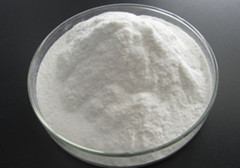admin
-

Guidance for Making Sodium Carboxymethyl Cellulose Solution
.
Food Additives Sodium carboxymethyl starch is everywhere in the food industry. Food additives are modern food industry products, no food additives, food can not be as colorful as it…
-

Hydroxypropyl methyl cellulose
.
Hydroxypropyl methyl cellulose, the whole process in the automatic monitoring of the end, does not contain any animal organs and grease and other active ingredients, non-ionic cellulose ether, the…
-

Sodium Carboxymethyl Cellulose Application
.
1. What are the effects and uses of sodium carboxymethyl cellulose in the food industry: FAO and WHO have approved the use of pure cmc for food, which is…
-

Sodium Carboxymethyl Cellulose Function and Application
.
What is Sodium Carboxymethyl Cellulose (also known as: sodium carboxymethyl cellulose, carboxymethyl cellulose, cmc, Carboxymethyl, Cellulose Sodium, Sodium salt of Caboxy Methyl Cellulose) is the most widely used in the…
-

Microcrystalline Cellulose 102 Certificate of Analysis
.
CERTIFICATE OF ANALYSIS Product:Microcrystalline Cellulose 102 Batch No. 161120 REP DATE NOV.27,2016 Specifications 20kg/bag MFG DATE NOV.21,2016 Quantity 1000kg EXP DATE NOV.20,2018 Tests Standard USP35 Examinations Identification Positive Positive PH 5.0-7.0 6.2 Ether-soluble Matter(%) ≤0.05 0.03 Water-soluble Matter(%) ≤0.25 0.15…
-

Microcrystalline Cellulose PH101 USP35-NF30
.
Microcrystalline Cellulose PH101 USP35-NF30 BATCH NUMBER 20170405 TEST DATE Apr.06,2017 QUANTITY 3400kg MANUFACTURE DATE Apr.05,2017 PACKING 25kg/bag EXPIRY DATE Apr.04,2019 TEST ITEMS SPECIFICATION RESULTS Appearance White or almost white,fine…
